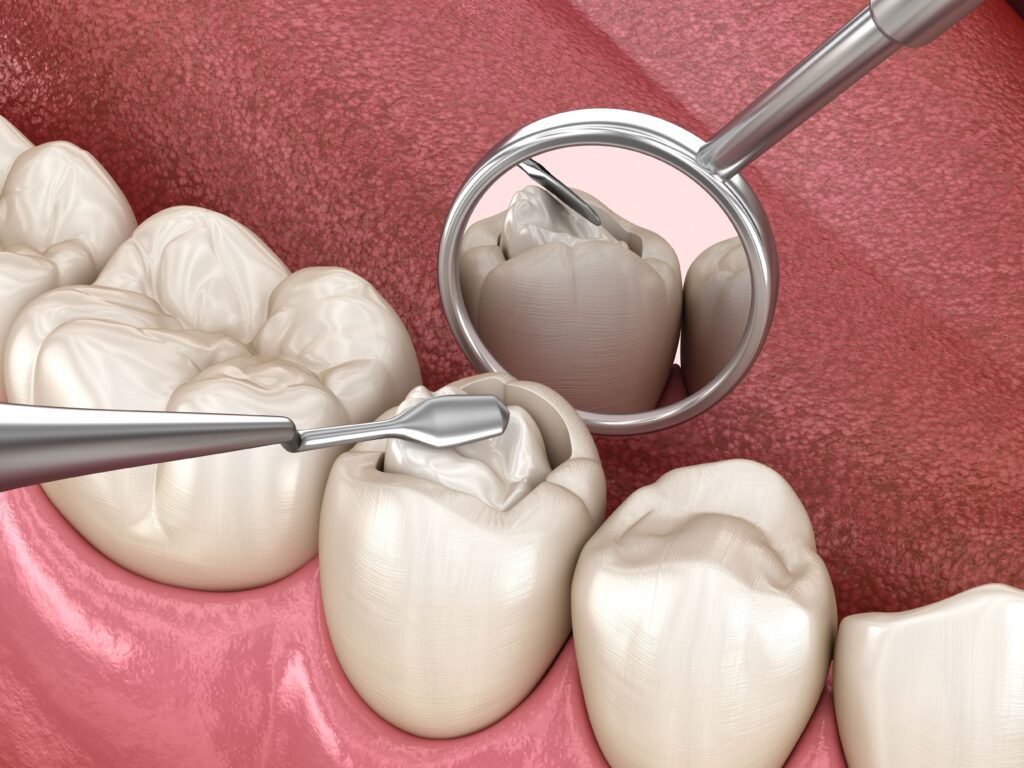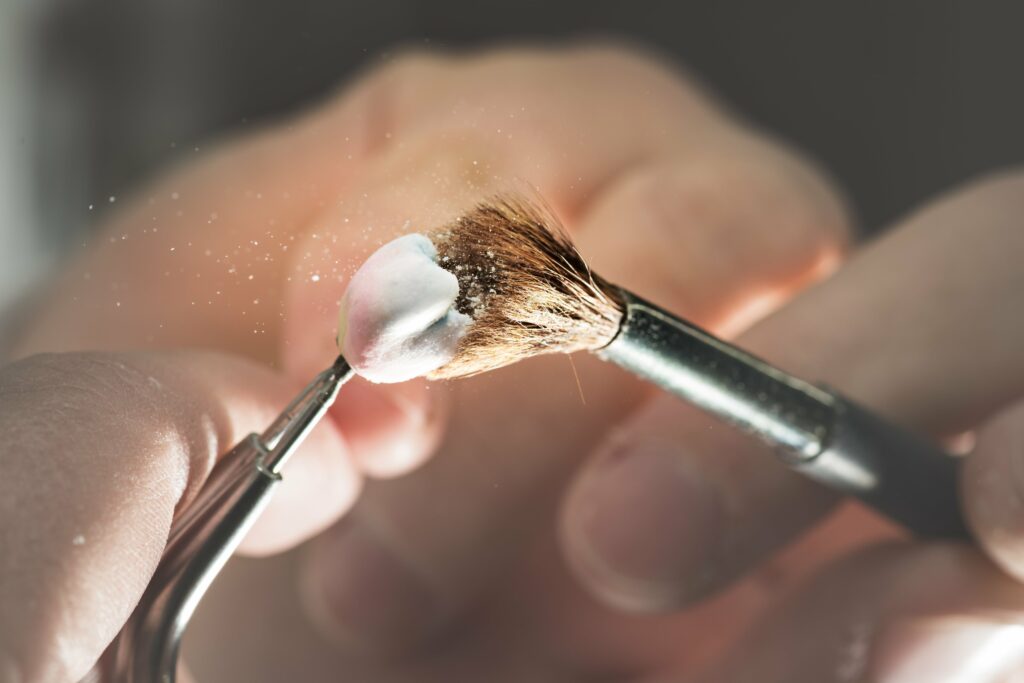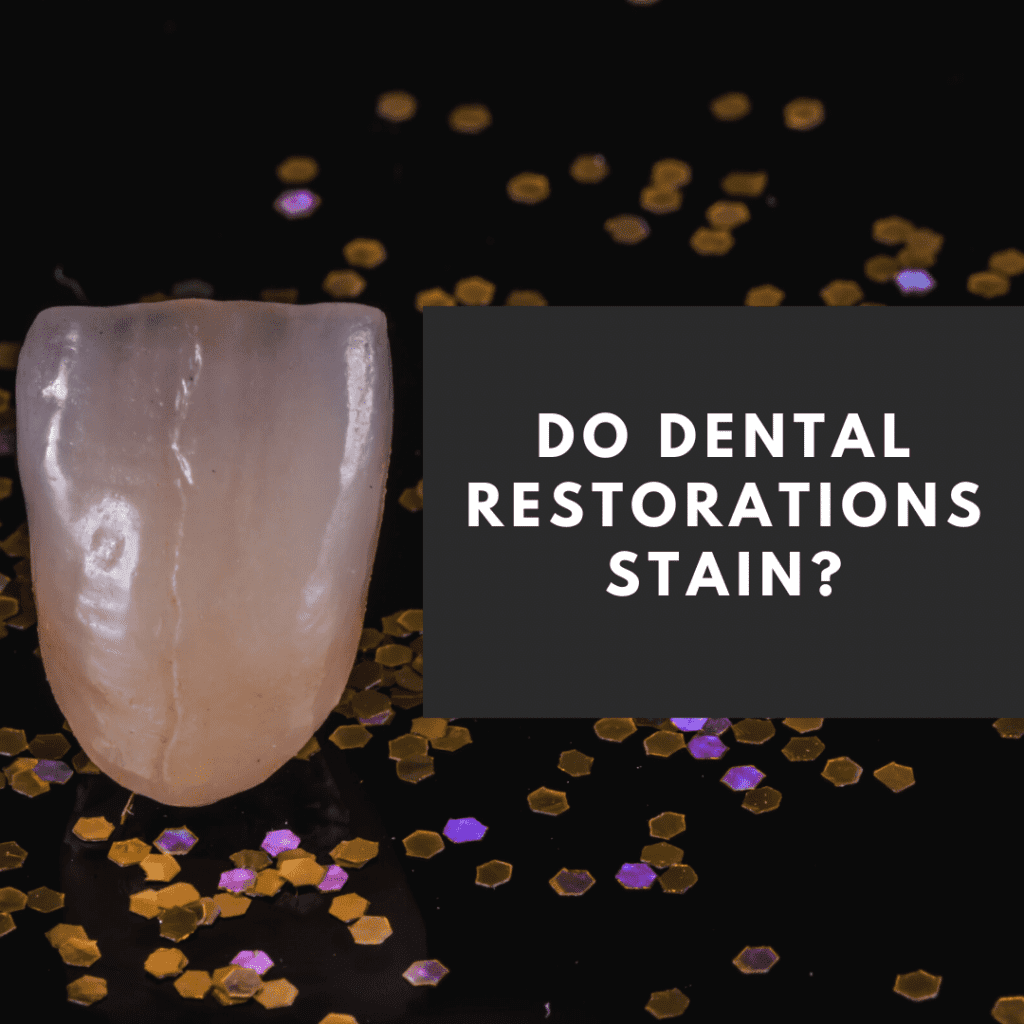Nowadays, there are a variety of cosmetic dental treatments available to help improve the look of your smile. One common complaint that many people have about their smile is its color. For this reason, there are a variety of cosmetic dental treatments that are directed specifically at improving the color of the teeth. Although teeth whitening procedures work by removing stains from the teeth, other cosmetic procedures work by concealing these stains with dental restorations.
There are a variety of dental restorations that can be used to conceal stained teeth, as well as various other imperfections. These include crowns, bridges, composite fillings, inlays, onlays, and veneers. The irony, however, is that these restorations may also become stained at some point. While they won’t all necessarily stain, here is what you need to know about dental restorations and stains:
Some stain easier than others

First and foremost, it is important to realize that some dental materials are simply more likely to stain than others. This means that dental restorations made with these materials are also more likely to eventually develop stains. Composite resin is an example of a commonly used dental material that has been found to develop stains after regular exposure to colored pigments. These pigments are found in foods and beverages, although red wine and coffee were found to be especially problematic.
Composite resin is applied as a viscous material that is shaped and then hardened in place. Composite resin can also be customized in terms of color so that it matches the surrounding tooth structure. Because of this, it is used to fabricate direct restorations, or restorations that are completed inside the mouth. Such restorations include composite fillings and composite veneers. Composite resin is also used for cosmetic bonding procedures to repair minor chips and cracks.
Some are stain-resistant

Porcelain is another dental material that is commonly used to fabricate dental restorations. Unlike composite resin, however, porcelain restorations are fabricated outside of the mouth from a block of porcelain before they are cemented in place. These are known as indirect restorations and they include crowns, bridges, dentures, inlays, onlays, and veneers. Porcelain is commonly used to fabricate these restorations for two reasons: its strength and its ability to repel stains. As a result, porcelain restorations that are properly cared for generally do not stain.
Even stain-resistant can stain
Despite the fact that porcelain restorations are stain-resistant, there are cases where a porcelain restoration can stain. This can happen when the outer glaze has become worn down or damaged. There are different things that can cause the outer glaze to wear down including: acidic foods and beverages, abrasive toothpastes, alcoholic beverages, tar in cigarettes, eating excessively hard foods, using your teeth as tools, or brushing too hard. Therefore, it is recommended to avoid these things to prevent damaging the porcelain outer glaze.

Dr. Admar holds dual certificates — a Bachelor of Dental Surgery (BDS) in 2010 from India and a Doctor of Dental Surgery (DDS) in 2014 from Canada. He is now a full time practicing dentist in Kamloops where he provides a variety of services, including emergency dentistry. Dr. Admar spends hundreds of hours in continued dental education to stay up to date in cosmetic and implant dentistry and he has achieved several advanced qualifications.


